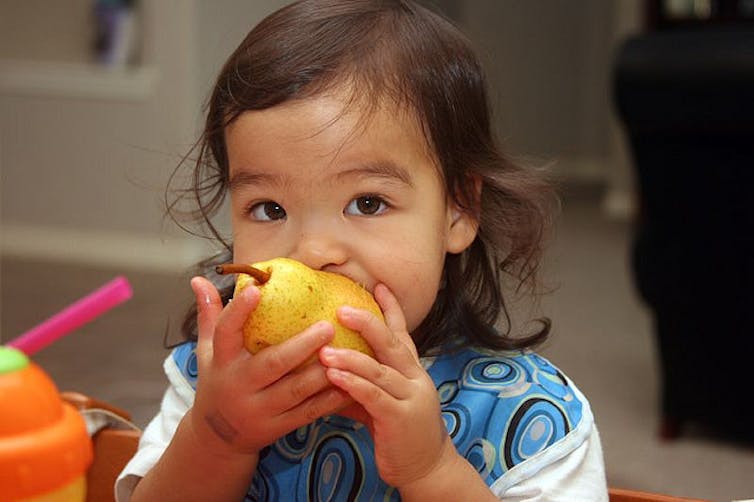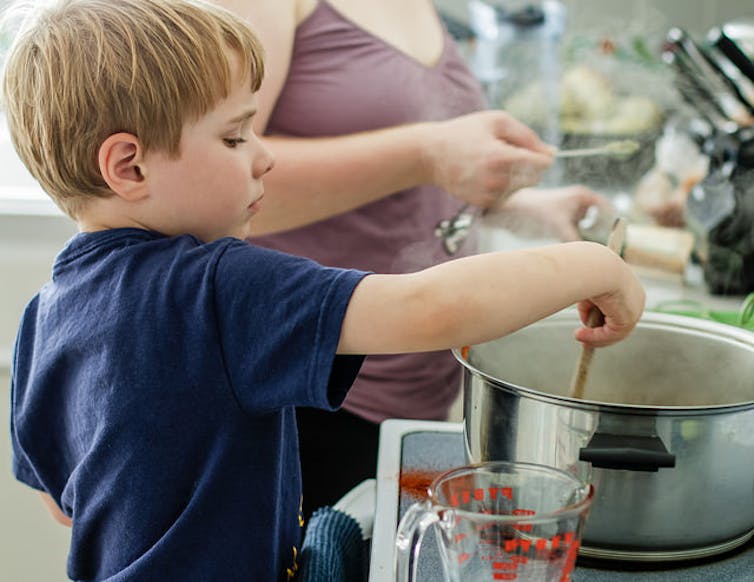Hippocrates said circa 400BC that “food should be our medicine and medicine should be our food”. He would probably turn in his grave if he saw the amount of highly processed, sugary food and drinks marketed to children today. This food can be as addictive as cocaine or heroin. And it’s difficult for parents to counteract its appeal.
One in four Australian children and 63% of adults are overweight or obese. This is contributing to unprecedented levels of preventable obesity-related disease such as diabetes, heart disease, and liver and kidney failure.
Unhealthy diets also contribute to poor mental health and lower IQ in children. Just like our body, our brain needs essential nutrients and a healthy environment free from inflammation, oxidation and excess glucose to work properly.
What can we do?
Public health groups are tackling junk food marketing with a multifaceted approach akin to the painfully gradual change that reduced tobacco advertising and smoking. In the meantime, parents can have a very important influence on their child’s health and eating choices.
A healthy diet at any age is high in plant foods such as fruit, vegetables, legumes, nuts, seeds and wholegrains as well as fish and healthy oils such as extra virgin olive oil. And it’s low in processed, high-fat, high-sugar foods and red meat.
It’s important to enjoy a variety of foods from each of the core food groups in order to get a broad range of essential nutrients.

So, for starters, breastfeeding for 12 months gives children a healthy immunity and has multiple benefits for their health and for their cognitive development. It can also impact on their taste preferences by exposing them to multidimensional flavours – and they can develop taste preferences for foods that mum eats too (healthy or otherwise).
The best time to gradually start introducing solids is around six months of age, when children are developmentally ready and start needing extra calories and some extra nutrients such as iron. But even the most well-meaning parents can struggle to get toddlers and children to eat healthy food, especially vegetables.
Convincing toddlers
Children will learn to like healthy food such as vegetables if they are regularly exposed to them from a young age. Where you can, cook baby foods yourself from fresh ingredients, and avoid adding sugars and salt.
Children’s taste preferences are established in early life. It is best to keep it simple – introduce new vegetables and fruit one at a time so they can learn to appreciate the individual flavours.
Young children naturally tend to develop neophobia, fear of unknown food, at around the age of two. Therefore, continued exposure to healthy foods, rather than pandering to fussiness, will help to mitigate this and their willingness to try novel foods will naturally increase over time.
Research shows it can take ten to 14 exposures to a previously unliked vegetable for children to like it and choose to eat it. So don’t give up. It’s important for this exposure to be neutral, without any pressure, rewards or bribes. Make it a positive family occasion free from distractions such as TV, other media and toys.
Research has shown that even exposing children to vegetables in story books from a young age can further strengthen the likelihood that they will eat vegetables.

Most importantly, make it fun and let children play with their food to explore all of the colours, flavours and textures.
The “parent provide, child decide” model can make this process a little easier. This is where parents provide healthy options within firm boundaries and allow the child to decide what, and how much to eat. Keep the unhealthy options out of the house.
Forcing children to eat vegetables does not work – you might win the battle but will lose the war. Avoid negative associations with healthy food, as these can put them off.
Nor does using bribes or rewards work, as children will learn to prefer the reward and not learn to enjoy healthy food for its own intrinsic taste.
Children will eat when they are hungry; their appetite will vary so don’t panic if they don’t want to eat. Let them learn to listen to their bodies and their innate hunger cues.
They will also copy you. So if you want healthy children, you need to be a good role model and eat well too.
Encouraging older children
As children get older, other children, parties and school can influence their eating behaviours. However, the family food environment still plays an important role in influencing healthy eating – in particular, the mother’s role modelling behaviour and the food that is available in the home.
Other things that parents can do is involve children in shopping, cooking, gardening. School projects have shown that if children are involved in growing, picking and cooking vegetables they are more likely to eat them.

Children of all ages whose families eat together at home – free from distractions such as television – have been shown to have healthier diets. So make it a priority to eat together. This is also a great time for conversation and bonding.
And don’t despair if you or your child is struggling. The good news is that food addictions and taste preferences can be changed. There are infinite healthy, tasty recipes that are simple and affordable to make.
In sum, create a warm, positive, healthy food and meal environment free from distractions when eating, and be a good role model. Children will learn to enjoy good food as it is meant to be enjoyed, and flourish in the process.

